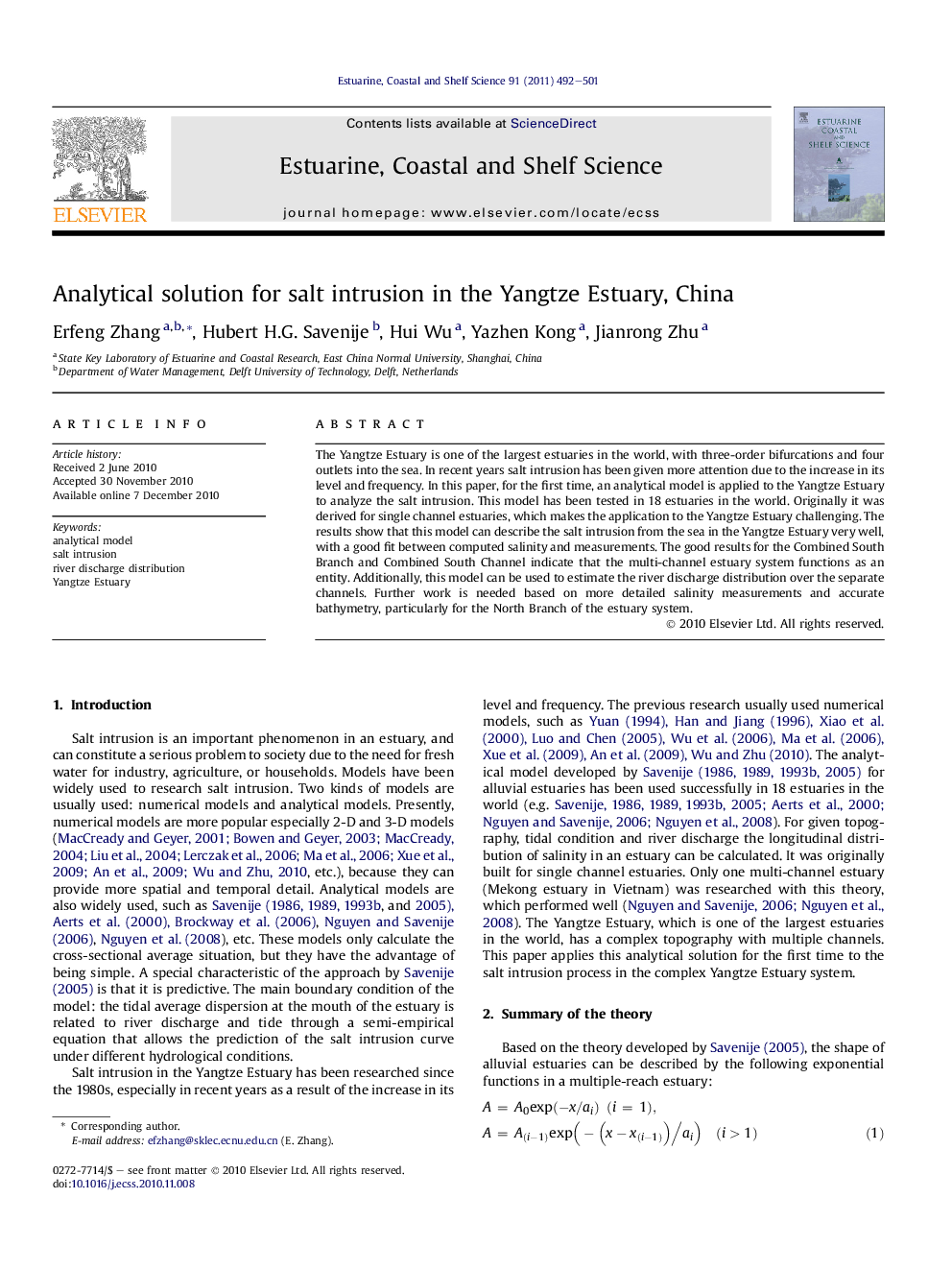| Article ID | Journal | Published Year | Pages | File Type |
|---|---|---|---|---|
| 4540469 | Estuarine, Coastal and Shelf Science | 2011 | 10 Pages |
The Yangtze Estuary is one of the largest estuaries in the world, with three-order bifurcations and four outlets into the sea. In recent years salt intrusion has been given more attention due to the increase in its level and frequency. In this paper, for the first time, an analytical model is applied to the Yangtze Estuary to analyze the salt intrusion. This model has been tested in 18 estuaries in the world. Originally it was derived for single channel estuaries, which makes the application to the Yangtze Estuary challenging. The results show that this model can describe the salt intrusion from the sea in the Yangtze Estuary very well, with a good fit between computed salinity and measurements. The good results for the Combined South Branch and Combined South Channel indicate that the multi-channel estuary system functions as an entity. Additionally, this model can be used to estimate the river discharge distribution over the separate channels. Further work is needed based on more detailed salinity measurements and accurate bathymetry, particularly for the North Branch of the estuary system.
Research highlights► We apply relatively simple analytical salt intrusion equations to a complex estuary system. ► It appears that these analytical equations can describe the salt intrusion well. ► The salt intrusion in the North Branch is crucial for influencing the use of fresh water in the estuary. ► The river discharge distribution over separate channels is very important for the salt intrusion in a multi-channel estuary, more crucial for the North Branch in the Yangtze Estuary. ► More observations and research are required to better describe the salt intrusion process, particularly in the North Branch.
